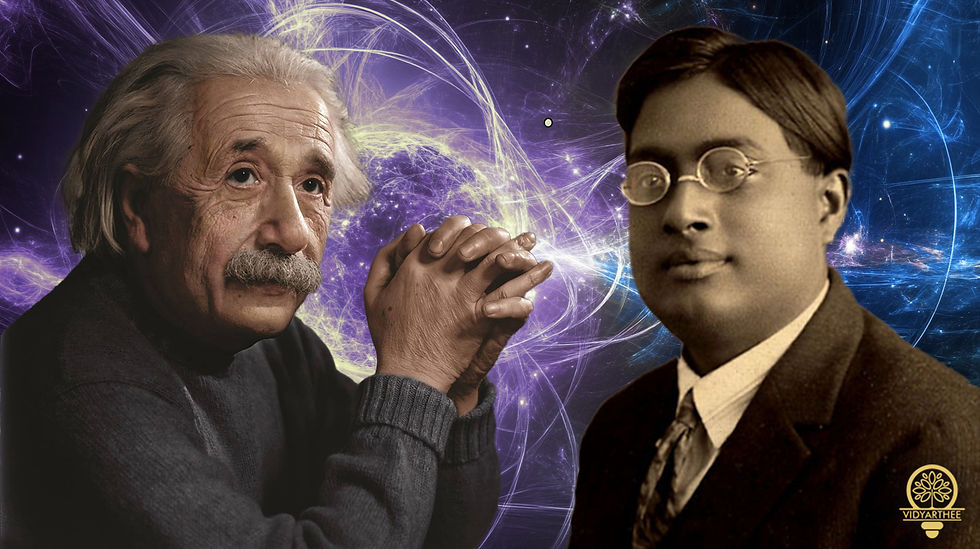Celebrating 100 Years of Bose-Einstein Statistics: A Quantum Milestone
- ABhishek Mohapatra
- Nov 15, 2024
- 2 min read

The centenary celebrations of Bose-Einstein Statistics, a groundbreaking concept in quantum mechanics, were inaugurated by India’s Science and Technology Minister. This monumental collaboration between Indian physicist S.N. Bose and Albert Einstein paved the way for modern quantum science and technology.
Understanding Bose-Einstein Statistics
Bose-Einstein (B–E) statistics describes the distribution of identical, non-interacting particles over discrete energy states in thermodynamic equilibrium.
Key Concepts:
Particle Distribution: It explains how particles or photons arrange themselves across energy states.
Bosons: Particles following B–E statistics are called bosons, named in honor of S.N. Bose.
Characteristics: Bosons have integer spin values (0, 1, 2, etc.).
Examples: Photons, gluons, and other fundamental particles.
Milestones Achieved by B–E Statistics
Quantum Revolution
First Revolution (20th Century): Sparked the development of key technologies, including:
Lasers
Transistors
Magnetic Resonance Imaging (MRI)
Semiconductors
Second Revolution (21st Century): Enabled advancements like:
Quantum Computing
Quantum Sensing
Discovery of Bose-Einstein Condensate (BEC)
BEC is the fifth state of matter, achieved when particles are cooled to near absolute zero (-273.15°C). At this state, particles exhibit collective quantum behavior, forming a single quantum entity.
S.N. Bose’s Contribution
S.N. Bose’s work, initially rejected by leading journals, gained recognition after he sent his paper to Albert Einstein, who translated and published it. Their collaboration laid the foundation for B–E statistics and highlighted Bose’s pivotal role in quantum mechanics.
Why Bose-Einstein Statistics Matters
Technological Impact: Technologies like quantum sensors, cryptography, and advanced imaging rely heavily on principles derived from B–E statistics.
Scientific Relevance: It explains fundamental behaviors of particles, crucial for advancements in particle physics and cosmology.
India’s Scientific Heritage: The contribution of S.N. Bose showcases India’s rich legacy in the field of science and mathematics.
Practice Question
Which of the following statements regarding Bose-Einstein Statistics is/are correct?
It describes the distribution of identical particles in thermodynamic equilibrium.
Particles obeying B–E statistics are called fermions.
Bose-Einstein Condensate is the fourth state of matter.
Select the correct answer using the code given below:
(a) 1 only
(b) 1 and 2 only
(c) 2 and 3 only
(d) 1 and 3 only
Answer: (a) 1 only
Explanation:
Statement 1 is correct as B–E statistics explains particle distribution in thermodynamic equilibrium.
Statement 2 is incorrect; particles obeying B–E statistics are bosons, not fermions.
Statement 3 is incorrect; Bose-Einstein Condensate is the fifth state of matter.




Comments